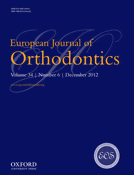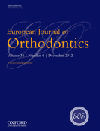
The study sample consisted of 68 adult patients (45 females and 23 males) broken into three groups: 28 buccal, 19 lingual, and 21 Invisalign patients. Following appliance insertion, patients completed a Health-Related Quality of Life questionnaire daily for the first week and again on day 14. The questionnaire was used to assess patients’ perception of pain and analgesic consumption. In addition, four areas of dysfunction were assessed: oral dysfunction, eating disturbances, general activity parameters, and oral symptoms.
The findings showed that lingual appliances were associated with more severe pain and analgesic consumption, the greatest oral and general dysfunction, and the most difficult and longest recovery. The Invisalign patients complained of relatively high levels of pain in the first days after insertion; however, this group was characterized by the lowest level of oral symptoms and by a similar level of general activity disturbances and oral dysfunction compared to the buccal appliance.
The study’s authors note that many lingual and some buccal patients did not reach a full recovery from their eating difficulties by the end of the study period.
The goal of the study was to provide adult patients and clinicians assisting them in choosing the most appropriate treatment modality in relation to Health-Related Quality of Life parameters.










